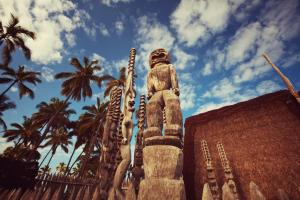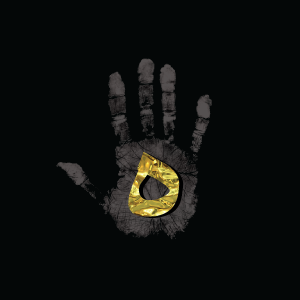Perhaps you’ve been wondering how much of Muana has a bearing on reality. Maybe you’ve recently read about Dwayne Johnson’s tattoos and wanted to know more about the symbolism.
Whatever sparked your interest in the Hawaiian religion is less important than the thrill of the search. Like many polytheistic religions, there are many figures to learn about.
Also, like many polytheistic religions, it faces co-option from new-age woo peddlers. As usual, they’re trying to borrow ancient gods to promote pseudoscience ideas.
Read on to hear all about the major, and minor pantheons of Hawaiian deities.
Hawaiian Religion Major Pantheon
Records for the traditions of Hawaiian belief started around 500 CE. It consists of four major gods (ka ha), a half-dozen other gods (kupua), and a multitude of minor gods (ke kini akua).
Kane
The progenitor deity of the Hawaiian religion, Kane woke up and realized it had a self beyond the surrounding darkness.
This gives Kane a double concept of light and enlightenment.
Kane also represents the sky and power of the sun as well as the north.
Kane brought forth the aumakua system, in which all families are protected by a guardian.
Lono
This is the second god to emerge from the darkness of Po. Lono brought into existence the rain and music. He is associated with concepts of agriculture, fertility, and peace.
Worship and celebrations of Makahiki celebrate Lono in the spring. For this reason, he is associated with the east.
Ku
The last of the gods to emerge from Po and create the world of Ao (Earth), Ku represents war and the power of conflict in general. Appeasing Ku and invoking his favor were key components of the early aumakua tradition.
Ku represents the west.
Kanaloa
A sometimes forgotten god. Many sources list the previous three as a triumvirate rather than a quadrant. These Kumulipo (epics) detail the stories of creation.
This is likely contamination from other trinities throughout the world such as the ones found in Malai, Christian, Greek, and Norse traditions.
Kanaloa represents the underworld, the ocean, and the south.
Hawaiian Religion Minor Pantheon
Though the follow gods have less prominence within the religious belief itself, they sometimes hold more prominence in cultural appeal.
You can find tikis and celebrations of these figures in many towns as you escape on your Hawaii cruise vacation.
Hina
Goddess of the moon. She took a grove of trees from the Earth, placed them in a canoe, and made her way to a crater. There, she planted and watches over the trees from afar.
Hina has strong similarities to other Polynesian lunar goddesses.
Kuula
A god that protects fishermen and grants them safety and abundant catches.
A child god of Kanaloa, hence the connection to the ocean.
Laka
Goddess of dance and teacher of the hula. Laka represents the energy and exoneration of sexuality.
Pele
Everyone’s favorite volcano goddess. A later comer to the tradition and mother of the Hawaiian islands themselves.
Pele may be based on an earlier arrival on the islands or an amalgamation of other Polynesian deities.
Explore More
Learning about ancient beliefs like the Hawaiian religion gives a great insight into the people that developed and lived such traditions.
Regardless of your spirituality or theistic approach, the’s always more to learn about the beliefs of the people’s of the world. Keep reading our blog for more info on all of your curiosities.













